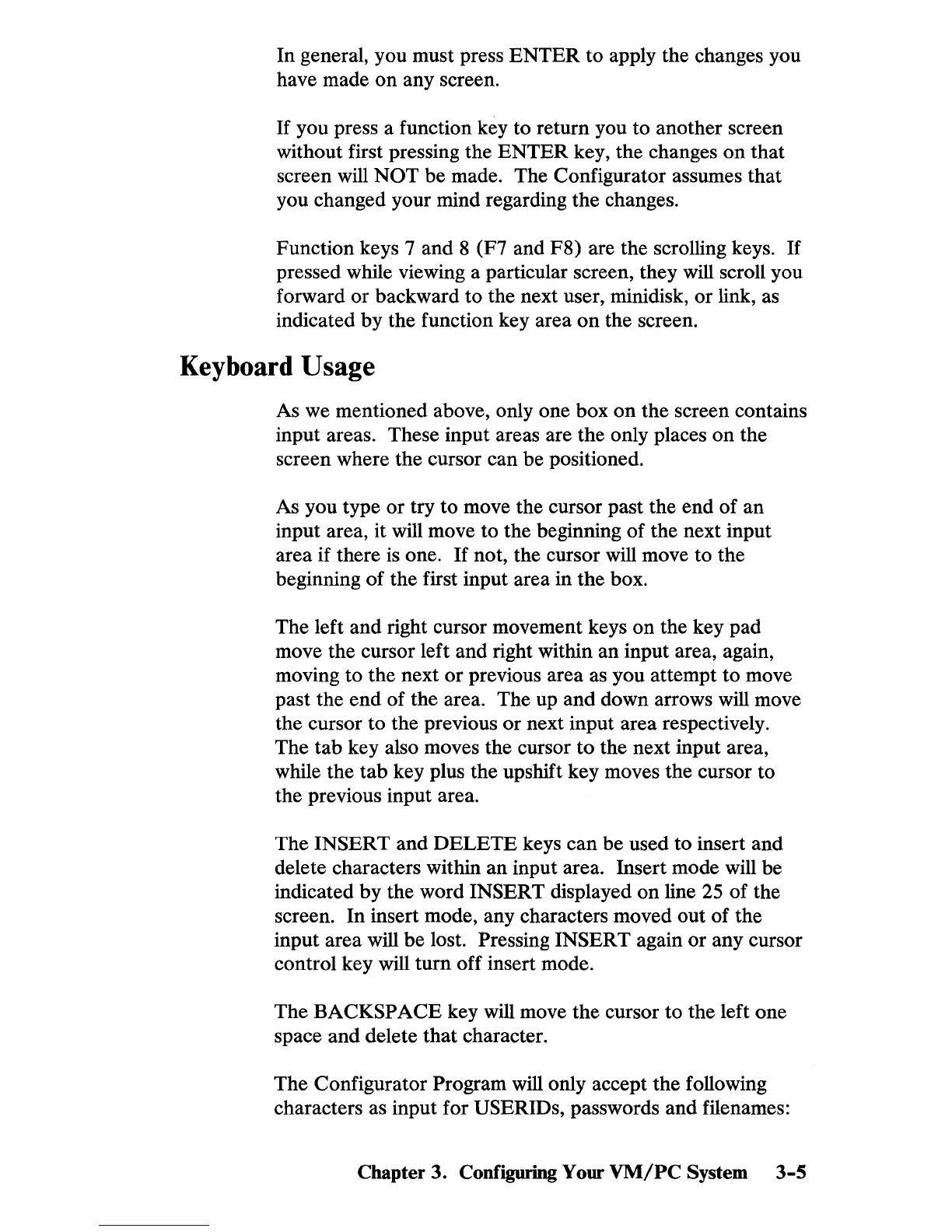In general, you must press
ENTER
to apply the changes you
have made
on
any screen.
If
you press a function key to return you to another screen
without first pressing the
ENTER
key, the changes
on
that
screen will
NOT be made. The Configurator assumes that
you changed your mind regarding the changes.
Function keys 7 and 8 (F7 and
F8)
are the scrolling keys.
If
pressed while viewing a particular screen, they will scroll you
forward or backward to the next user, minidisk, or link, as
indicated by the function key area
on
the screen.
Keyboard
Usage
As we mentioned above, only one box
on
the screen contains
input areas. These input areas are the only places
on
the
screen where the cursor can be positioned.
As you type or try to move the cursor past the end of an
input area, it will move to the beginning
of
the next input
area if there
is
one.
If
not, the cursor will move to the
beginning
of
the first input area in the box.
The left and right cursor movement keys on the key pad
move the cursor left and right within an input area, again,
moving to the next
or
previous area as you attempt
to
move
past the end of the area. The up and down arrows will move
the cursor
to
the previous
or
next input area respectively.
The tab key also moves the cursor
to
the next input area,
while the tab key plus the upshift key moves the cursor to
the previous input area.
The
INSERT and
DELETE
keys can be used to insert and
delete characters within an input area. Insert mode will be
indicated by the word
INSERT displayed
on
line 25 of the
screen. In insert mode, any characters moved out of the
input area will
be
lost. Pressing INSERT again
or
any cursor
control key will turn off insert mode.
The
BACKSPACE key will move the cursor to the left one
space and delete that character.
The Configurator
Program will only accept the following
characters as input for
USERIDs, passwords and filenames:
Chapter 3. Configuring Your
VM/PC
System
3-5
